Umarex Primal 20
$600.00
SPECIFICATIONS
Manufacturer…………Umarex
Velocity………………… 700 fps
Condition………… New
Ammo Type………. Pellets
Action …………….Bolt-action
Barrel…………….. Style Smooth bore
Fire Mode…………….. Repeater
Gun Weight ………………..11.00
Loudness……….. 5-High
Mechanism…………… Pre-charged pneumatic
Rail …………..Weaver/Picatinny
Safety ……………….Manual
Front Sights ………………none
Rear Sights………………. none
Shots per Fill ………………..4
Trigger Adjustability……………. 0
Trigger Action ……………0
Use ……………Hunting
Warranty …………..1-year limited warranty
If you’re hunting small game like squirrels, rabbits, or birds, choosing the right air rifle is crucial. The best air rifle for small game should be accurate, easy to handle, and reliable. In this guide, we’ll cover everything you need to know, from top models to maintenance tips.
An air rifle for small game is a type of gun that uses compressed air or gas to shoot pellets. Unlike regular firearms, air rifles are quieter, easier to handle, and ideal for small game hunting. They come in different calibers and styles, so it’s important to pick the one that suits your needs.
If you’re new to hunting or pest control, you may have heard the term “air rifle for small game” but aren’t exactly sure what it means. Simply put, an air rifle for small game is a type of gun that uses compressed air or gas to shoot pellets. These rifles are designed for hunting animals like squirrels, rabbits, and other small game efficiently and safely.
Unlike traditional firearms, air rifles are quieter, easier to handle, and often require less regulation in many areas. They are perfect for beginners, backyard hunting, or recreational shooting.
Types of Air Rifles for Small Game
Choosing the right type of air rifle is essential for hunting small game effectively. Here are the main types, their features, and why they are suitable for small game hunting:
1. Spring-Piston Air Rifles
Description:
Spring-piston air rifles are powered by a coiled spring and piston mechanism. When you cock the rifle, the spring compresses, and releasing it propels the pellet forward.
Pros:
-
Reliable and durable
-
No need for external gas or air canisters
-
Affordable compared to other types
Cons:
-
Requires effort to cock
-
Can have more recoil than other air rifles
Best For: Beginners and casual small game hunters looking for a reliable, low-maintenance option.
2. Break-Barrel Air Rifles
Description:
Break-barrel rifles are a type of spring-piston rifle. The barrel is “broken” or bent downwards to cock the spring and load a pellet.
Pros:
-
Simple and easy to use
-
One of the most common air rifle types
-
Good for beginners
Cons:
-
Limited shot power compared to PCP rifles
-
Slower follow-up shots
Best For: Beginners and those hunting small game like squirrels and rabbits at short to medium distances.
3. Pre-Charged Pneumatic (PCP) Air Rifles
Description:
PCP air rifles use compressed air stored in a cylinder. The air propels the pellet with high speed and consistency.
Pros:
-
High accuracy and power
-
Multiple shots without cocking each time
-
Excellent for long-range small game hunting
Cons:
-
More expensive
-
Requires an air pump or scuba tank to refill
Best For: Experienced hunters or anyone who wants precision and high performance for small game hunting.
4. CO₂-Powered Air Rifles
Description:
CO₂ air rifles use carbon dioxide cartridges to fire pellets.
Pros:
-
Lightweight and easy to handle
-
Minimal effort required to shoot
-
Quick follow-up shots
Cons:
-
Less powerful than PCP or spring rifles
-
CO₂ cartridges must be replaced frequently
Best For: Casual hunters or backyard pest control, ideal for short-range small game hunting.
How Does an Air Rifle for Small Game Work?
If you’re curious about how air rifles for small game work, this guide will break it down step by step. Understanding the mechanics can help you choose the right rifle and improve your hunting skills.
Understanding the Basics
An air rifle for small game is a type of gun that uses compressed air or gas to fire pellets at high speed. Unlike traditional firearms, air rifles do not use gunpowder. Instead, they rely on stored energy from a spring, compressed air, or CO₂ to propel the pellet toward the target.
This makes them quieter, safer, and ideal for hunting small animals like squirrels, rabbits, and birds.
How Air Rifles Work: Step by Step
The working mechanism varies slightly depending on the type of air rifle, but the basic steps are:
-
Loading the Pellet
-
The shooter loads a small lead or alloy pellet into the barrel.
-
In multi-shot rifles, the pellet is automatically aligned with the barrel.
-
-
Generating Power
-
Spring-Piston / Break-Barrel Rifles: Cocking the rifle compresses a spring. When released, the spring pushes a piston, compressing air and propelling the pellet.
-
PCP (Pre-Charged Pneumatic) Rifles: Compressed air is stored in a cylinder and released in controlled bursts to push the pellet.
-
CO₂ Rifles: A CO₂ cartridge releases gas when the trigger is pulled, forcing the pellet forward.
-
-
Firing the Pellet
-
The compressed air or gas expands rapidly, creating pressure behind the pellet.
-
The pellet accelerates down the barrel at high speed, often reaching 600–1000 feet per second (fps), depending on the rifle and caliber.
-
-
Hitting the Target
-
The pellet leaves the barrel with precision.
-
Air rifles for small game are designed to deliver accuracy and humane impact for hunting.
-
Key Components That Make Air Rifles Work
-
Barrel – Guides the pellet toward the target. Rifles with rifled barrels spin the pellet for better accuracy.
-
Trigger – Releases the compressed air or spring mechanism.
-
Power Mechanism – Can be spring-piston, pneumatic, or CO₂, depending on the rifle type.
-
Stock – Provides stability and comfort for aiming.
-
Sights or Scope – Helps with precise targeting, especially for small game.
Advantages of How Air Rifles Work
-
Quiet Operation – Small game animals are less likely to be scared.
-
Accurate and Efficient – Provides precise shooting for humane hunting.
-
Safe for Beginners – No gunpowder means reduced risk compared to firearms.
-
Environmentally Friendly – Lead or alloy pellets have minimal impact if used responsibly.
Key Features to Look For in an Air Rifle for Small Game
Choosing the right air rifle for small game requires understanding its key features. These features affect accuracy, power, comfort, and hunting success.
1. Caliber
Why it matters:
-
Caliber determines the size and impact of the pellet.
-
Common options for small game: .177 and .22 caliber.
-
.177 is faster and ideal for birds or target shooting.
-
.22 delivers more impact, perfect for rabbits and slightly larger small game.
2. Velocity
Why it matters:
-
Velocity is the speed at which the pellet travels.
-
Higher velocity increases accuracy and range.
-
For small game hunting, look for rifles with 600–1000 fps.
3. Power Source
Types:
-
Spring-Piston: Reliable, no external power needed, good for beginners.
-
Pre-Charged Pneumatic (PCP): High accuracy, multiple shots, ideal for experienced hunters.
-
CO₂-Powered: Lightweight, easy to shoot, best for casual hunting.
Why it matters:
-
The power source affects shooting consistency, maintenance, and overall performance.
4. Accuracy
Why it matters:
-
Small game requires precise shots.
-
Features that improve accuracy:
-
Rifled barrels
-
Adjustable iron sights
-
Ability to attach a scope
-
5. Ergonomics and Weight
Why it matters:
-
Comfortable grip and balanced weight improve shooting stability.
-
Lightweight rifles reduce fatigue during long hunting sessions.
6. Noise Level
Why it matters:
-
A quieter rifle prevents scaring away small game.
-
PCP and spring-piston rifles are usually quieter than firearms.
7. Build Quality and Materials
Why it matters:
-
A well-built rifle lasts longer and maintains performance.
-
Look for durable stocks, high-quality metal barrels, and corrosion-resistant finishes.
8. Magazine Capacity (Optional)
Why it matters:
-
Some rifles allow multiple shots without reloading, which is useful for pest control or small game hunting.
-
Single-shot rifles are more traditional but require manual loading.
Performance & Accuracy of Air Rifles for Small Game
When it comes to hunting small game, performance and accuracy are the two most important aspects of an air rifle. They determine whether your shots are precise, humane, and effective.
1. What Affects Performance
Several factors influence how well an air rifle performs:
-
Caliber – The size of the pellet affects impact and range. For small game, .177 and .22 caliber are most common.
-
Velocity – Higher pellet speed (measured in feet per second, or fps) increases range and reduces drop. 600–1000 fps is ideal for small game.
-
Power Mechanism –
-
Spring-Piston / Break-Barrel: Reliable and consistent with practice.
-
Pre-Charged Pneumatic (PCP): High power and multiple shots without recocking.
-
CO₂: Convenient for casual hunting but less powerful at long range.
-
-
Barrel Type – Rifled barrels spin the pellet, improving stability and accuracy.
-
Trigger Quality – A smooth, adjustable trigger allows better control over shot timing.
2. Accuracy Considerations
Accuracy ensures your pellet hits the target cleanly, minimizing the risk of injuring the animal.
-
Sights and Scopes: Adjustable iron sights or a quality scope greatly improve shot placement.
-
Consistent Ammunition: Using the same type of pellets reduces variability and improves repeatable accuracy.
-
Stable Shooting Position: Supporting the rifle with a bipod or resting it on a surface helps maintain accuracy over distance.
-
Maintenance: Regular cleaning of the barrel and moving parts keeps performance consistent.
3. Range and Precision
-
Effective Range: Most small game air rifles have an effective range of 20–50 yards, depending on caliber and rifle type.
-
Precision: Pre-charged pneumatic (PCP) rifles are generally the most precise, followed by spring-piston rifles. CO₂ rifles are better for short-range accuracy.
4. Tips to Maximize Performance
-
Practice regularly to understand your rifle’s characteristics.
-
Choose the right pellet type and weight for your rifle.
-
Keep your rifle clean and well-maintained.
-
Adjust your sights or scope before hunting to ensure precision.
Care & Maintenance of Air Rifles for Small Game
Proper care and maintenance of your air rifle ensures consistent performance, accuracy, and a longer lifespan. Whether you are a beginner or an experienced hunter, regular upkeep is essential.
1. Cleaning the Barrel
-
Use a cleaning rod and appropriate brush to remove residue and lead buildup.
-
Clean the barrel after every few hundred shots or sooner if you notice decreased accuracy.
-
Avoid harsh chemicals; use air rifle-safe lubricants or cleaning pellets.
2. Lubricating Moving Parts
-
Spring-Piston & Break-Barrel Rifles: Apply a small amount of airgun-specific oil to the spring and piston to reduce friction.
-
PCP & CO₂ Rifles: Lubricate seals and O-rings occasionally to prevent leaks.
-
Over-lubrication can cause issues; use sparingly.
3. Checking Screws and Scope
-
Regularly inspect screws, bolts, and scope mounts to ensure they are tight.
-
Loose parts can affect accuracy and rifle performance.
4. Storing the Rifle Properly
-
Store in a dry, cool place to avoid rust and corrosion.
-
Use a gun case or protective cover for added safety.
-
Remove CO₂ cartridges when not in use for extended periods.
5. Maintaining the Stock and Exterior
-
Wipe the rifle with a soft cloth after use to remove dirt, moisture, or fingerprints.
-
For wooden stocks, use a wood-safe oil occasionally to prevent cracking or drying.
-
Metal parts can benefit from a light coat of anti-corrosion oil.
6. Checking Performance Regularly
-
Test-fire your rifle occasionally to ensure accuracy and consistency.
-
If performance drops, inspect for worn seals, barrel fouling, or damaged parts.
-
Replace worn components promptly to maintain reliability.
Why Choose the Right Air Rifle for Small Game
Selecting the right air rifle for small game is essential for both hunting success and safety. The correct rifle ensures accuracy, humane hunting, and an enjoyable experience.
1. Ensures Accuracy and Precision
-
Small game like squirrels, rabbits, and birds require precise shots to ensure a humane kill.
-
The right rifle, with proper caliber and velocity, makes it easier to hit the target consistently.
2. Matches the Type of Game
-
Different small game animals require different levels of power and pellet size.
-
.177 caliber is ideal for birds and tiny targets, while .22 caliber works better for rabbits and slightly larger game.
-
Choosing the wrong rifle can result in missed shots or unnecessary suffering.
3. Improves Safety
-
Air rifles are generally safer than firearms, but the correct power, caliber, and handling still matter.
-
Using a rifle suited for your experience level reduces the risk of accidents.
-
Ensures proper handling in backyards, farms, or public hunting areas.
4. Enhances Hunting Experience
-
A rifle that fits your ergonomics, weight preference, and shooting style makes hunting more comfortable.
-
Features like adjustable triggers, scopes, and smooth cocking mechanisms improve accuracy and enjoyment.
5. Long-Term Reliability
-
The right rifle is easier to maintain and care for, lasting longer and maintaining performance.
-
Investing in a quality rifle avoids frequent repairs or replacements.
Frequently Asked Questions (FAQ) About Air Rifles for Small Game
1. What is the best caliber for hunting small game?
-
For most small game, .177 and .22 caliber air rifles are ideal.
-
.177 is faster and better for birds and tiny targets.
-
.22 has more impact, making it suitable for rabbits and slightly larger small game.
2. Can an air rifle humanely hunt small game?
-
Yes, when used correctly, air rifles are effective and humane.
-
Proper shot placement and the right caliber are essential to ensure a clean, ethical kill.
3. How far can an air rifle shoot small game accurately?
-
Most small game air rifles have an effective range of 20–50 yards, depending on the rifle type, caliber, and pellet used.
-
Pre-charged pneumatic (PCP) rifles usually have the longest accurate range.
4. Are air rifles legal for hunting small game?
-
Air rifles are legal in most areas, but laws vary by state or country.
-
Always check your local hunting regulations before using an air rifle for small game.
5. What type of air rifle is best for beginners?
-
Break-barrel and spring-piston rifles are excellent for beginners.
-
They are easy to use, reliable, and require minimal maintenance.
6. Do I need a scope for hunting small game?
-
A scope or high-quality sights greatly improve accuracy, especially for distant or moving targets.
-
Adjustable iron sights can also be effective for close-range hunting.
7. How should I maintain my air rifle?
-
Clean the barrel regularly to prevent buildup.
-
Lubricate moving parts as needed.
-
Store the rifle in a dry, cool place and check screws and scopes before each use.
8. Which is better: PCP, spring-piston, or CO₂ air rifles?
-
PCP rifles: Best for experienced hunters seeking high accuracy and multiple shots.
-
Spring-piston/break-barrel rifles: Ideal for beginners and casual hunting.
-
CO₂ rifles: Lightweight and convenient, suitable for short-range hunting.
-
-
-
-
-
Air Rifle For Small Game
Air Rifle For Small Game . The Umarex Primal 20 is a big bore PCP that fires special 20 gauge slugs from a two shot sliding magazine and gives you one of a kind features you won’t find on any other current airgun. With this slug gun, you get energy up to 430 fpe and speeds up to 700 fps, giving you plenty of muscle along with precision for hunting and target shooting.
Whether you’re right handed or left handed, you’ll like the fact that this is a truly ambidextrous gun. You can switch the ambidextrous bolt to either side of the gun because it’s reversible, and the all weather polymer thumbhole stock is ambidextrous too. Plus, you’ll appreciate how easy it is to cock because it has a knurled cocking handle. Air Rifle For Small Game
You’ll enjoy great accuracy with this gun thanks to the Invector rifled choke tube on the barrel that works in combination with the 395 grain 20 gauge slug with a plastic wad attached to the base. You can also get shots with added accuracy by attaching the scope of your choice to the integrated Picatinny scope rail.
Air Rifle For Small Game
To give you the best safety features possible, the Umarex Primal 20 is the first airgun to hit the market with a true drop safety, plus the push through manual safety. So if you drop the gun on the ground, it won’t go off. You can also safely decock the air gun, and you get a cocked bolt indicator. Air Rifle For Small Game
The Umarex Primal 20 is a unique big-bore precharged pneumatic air shotgun featuring a two-shot sliding magazine for its proprietary 20 gauge slugs. Capable of producing velocities up to 700 FPS and energy up to 430 FPE, this air gun has the accuracy and power for big game hunting.
Air Rifle For Small Game
This airgun features an ambidextrous bolt with a knurl handle that makes it easier to cock, and it can be place on either side of the stock. Combined with the ambidextrous all-weather polymer thumbhole stock, these features make it an airgun that truly works equally well for both left-handed and right-handed shooters.
The Umarex Primal 20 also features a cocked bolt indicator, in addition to the ability to safely decock the airgun. Further, it gives shooters a true drop safety, which is the first of its kind on an airgun, as well as a push-through manual safety. With these features, shooters can be confident that the airgun will not shoot until ready, even if the gun hits the ground. Air Rifle For Small Game
The airgun delivers excellent accuracy because it utilizes an Invector rifled choke tube at the end of the barrel, as well as a special 395-grain 20 gauge rifled slug that has a plastic wad on the base. To provide options for accurate aiming, this air gun includes an integrated Picatinny optics rail to accommodate adding a scope.
| Caliber | Caliber .22, Caliber .25, Caliber .177 |
|---|
Be the first to review “Umarex Primal 20” Cancel reply
Related products
AIR RIFLES
AIR RIFLES
AIR RIFLES
AIR RIFLES
AIR RIFLES
AIR RIFLES
AIR RIFLES
AIR RIFLES

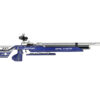
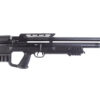
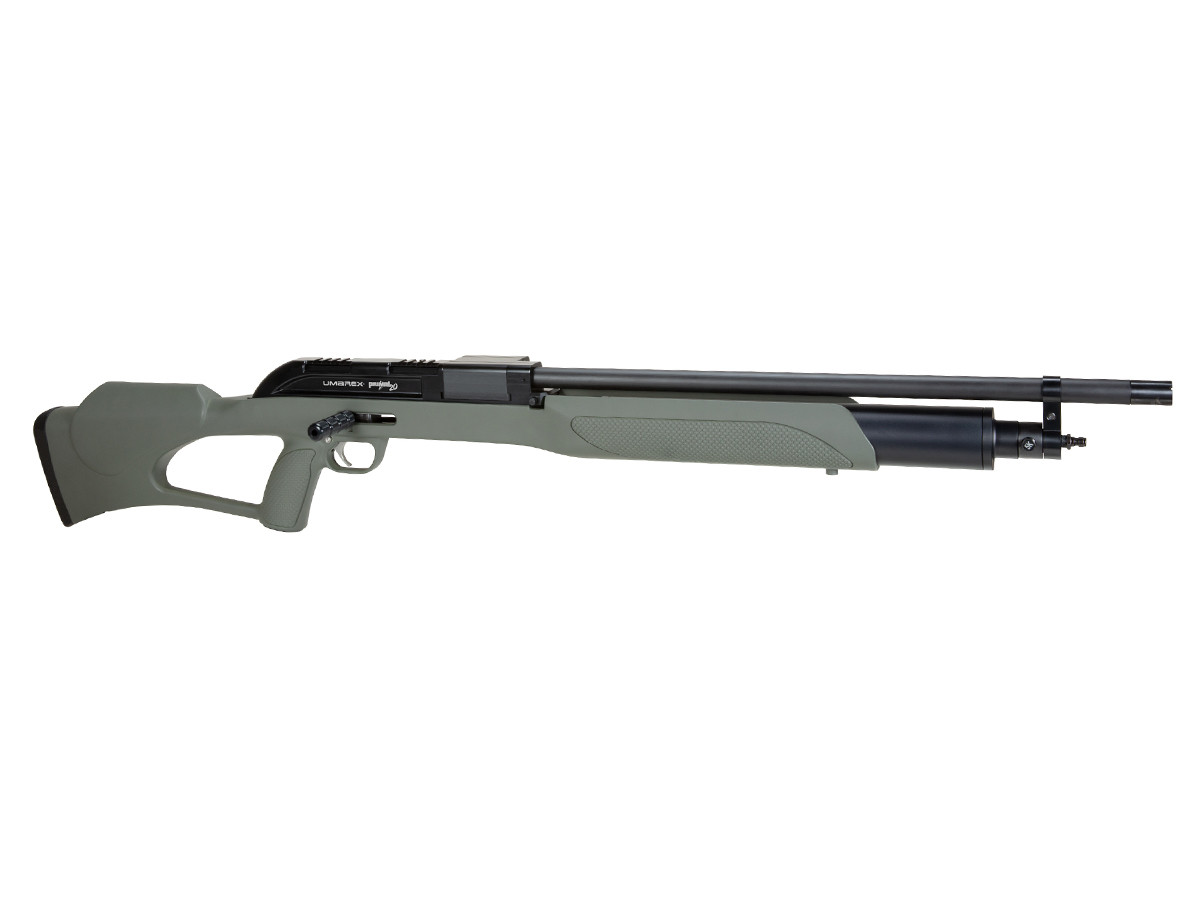
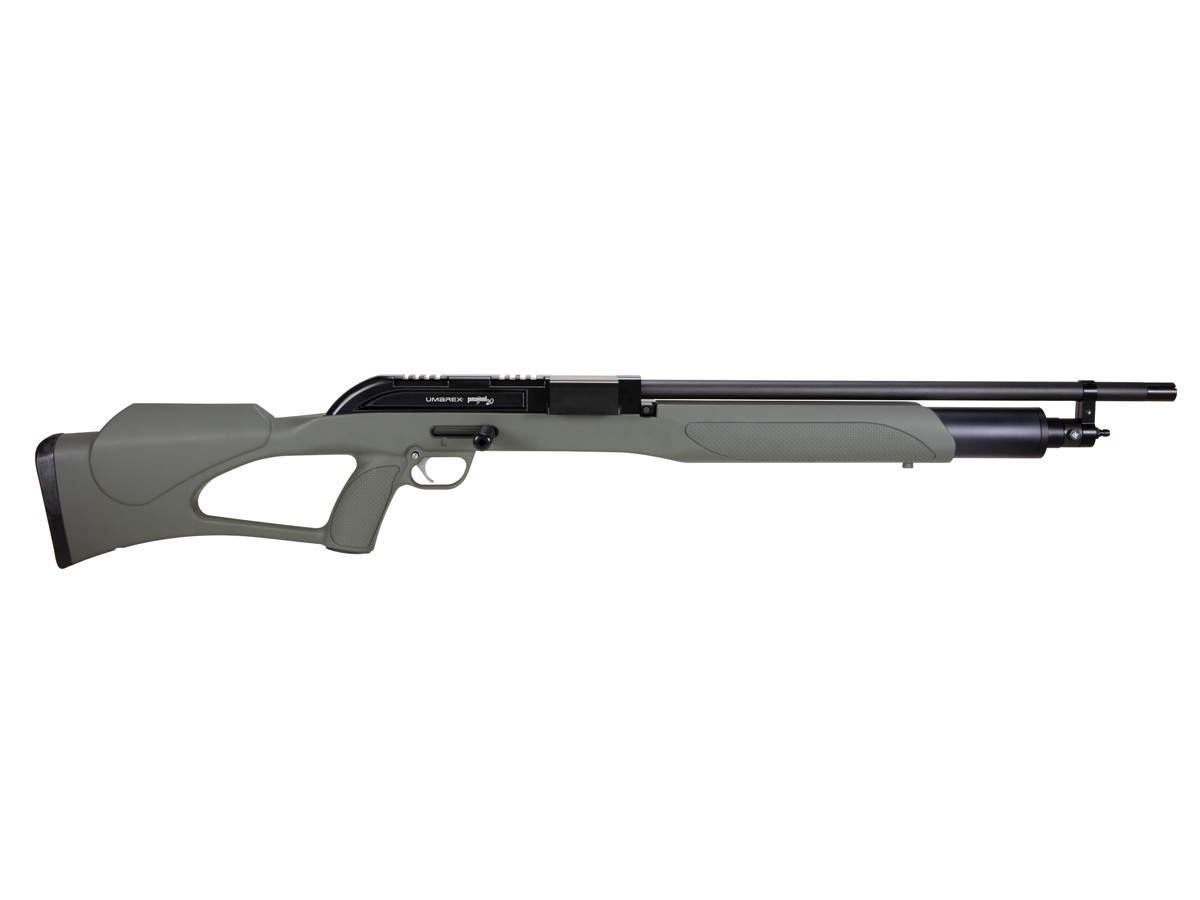
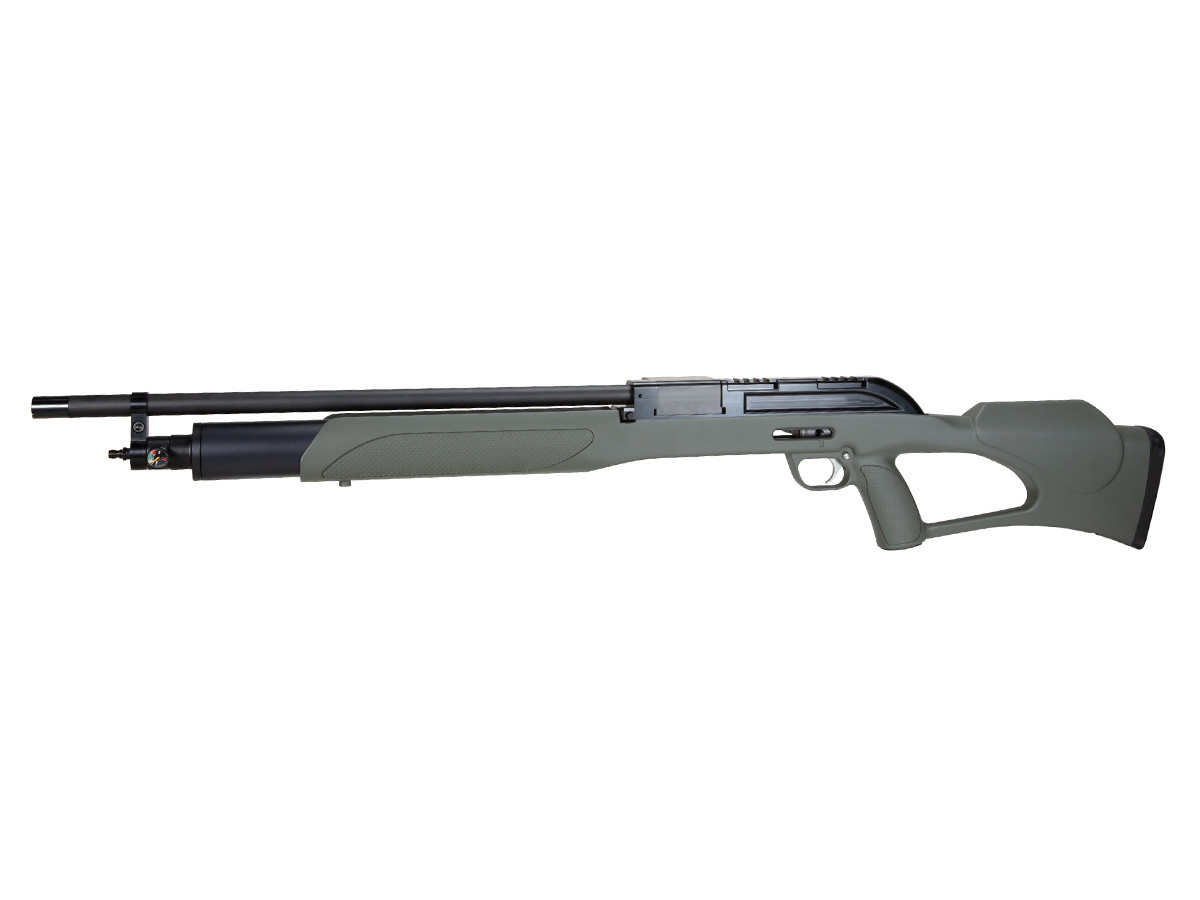
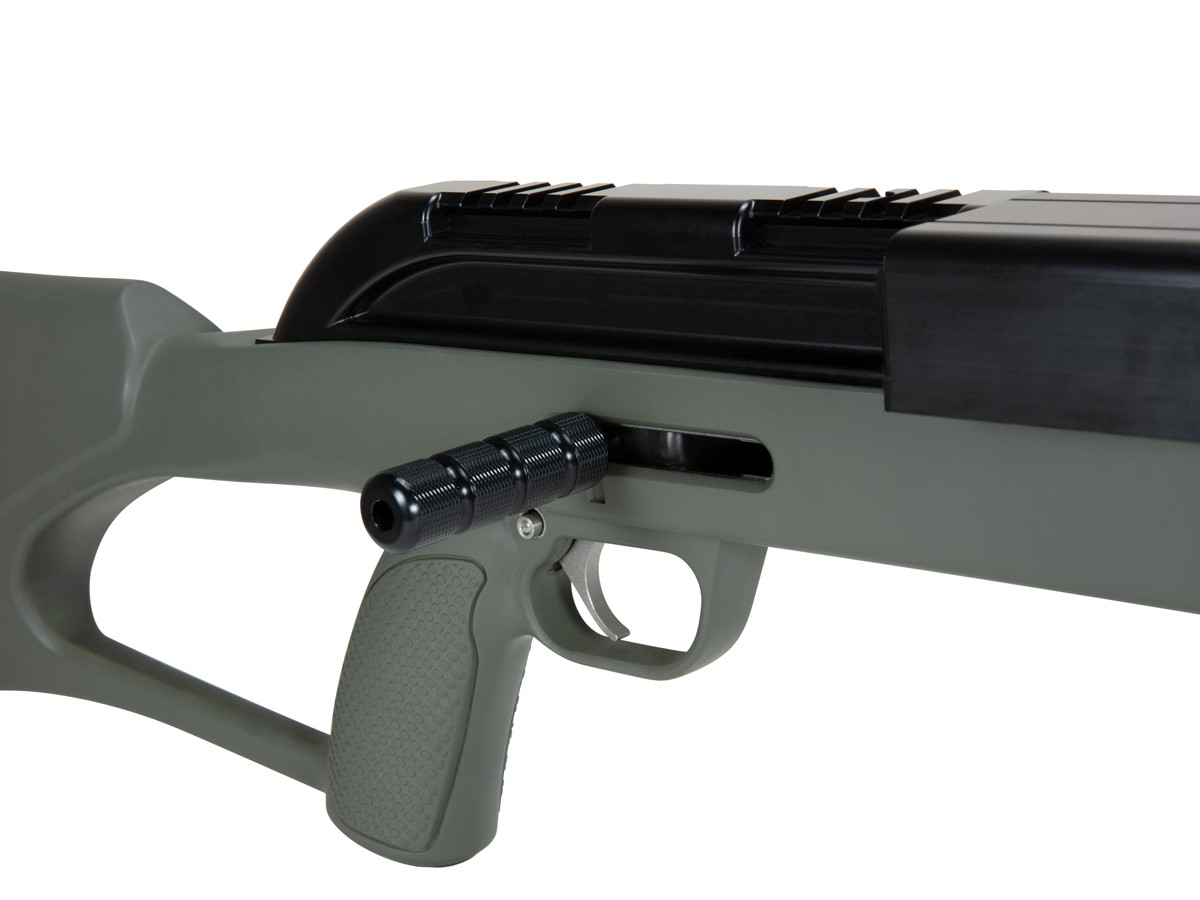
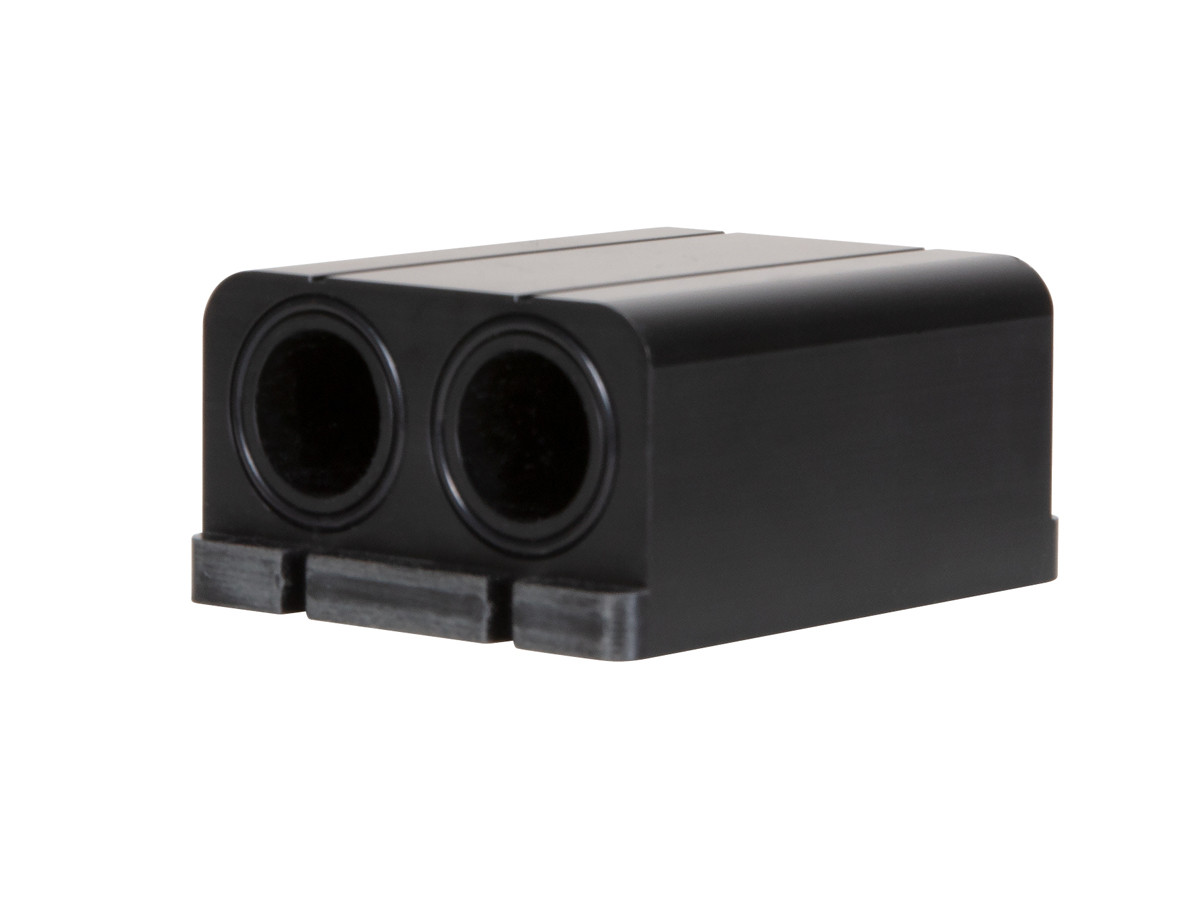
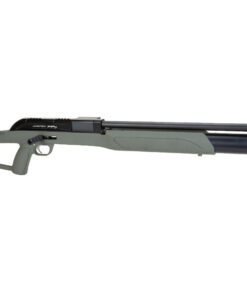
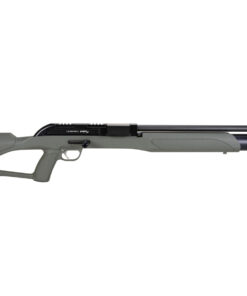
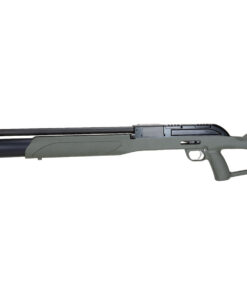
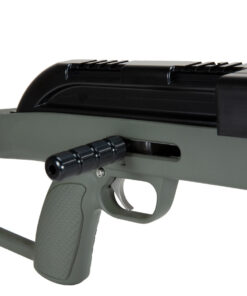
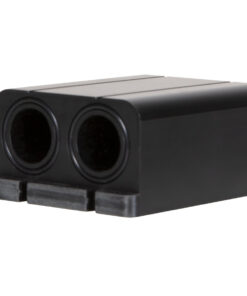



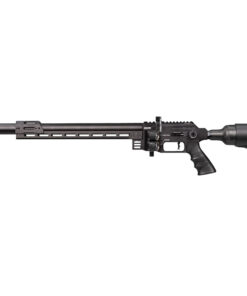
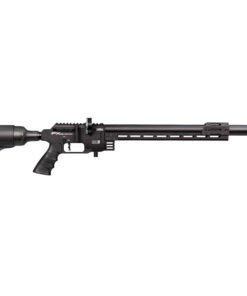



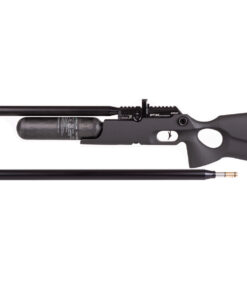

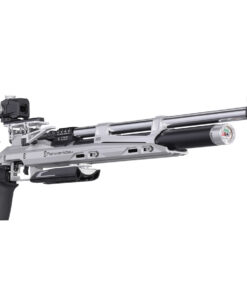
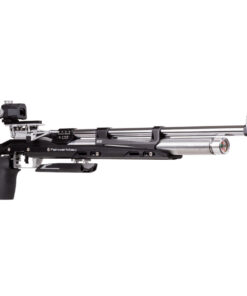

Reviews
There are no reviews yet.